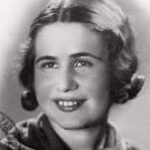Introduction: The Mystique of Area 51
Hidden deep within the Nevada desert, Area 51 has long been shrouded in secrecy, sparking endless speculation about its true purpose. Officially recognized as a U.S. Air Force testing facility, its very existence was denied by the government for decades. The base’s association with UFOs, advanced aircraft, and classified military projects has made it a focal point of conspiracy theories and pop culture. But beyond the myths, what really happens inside this heavily guarded compound? This deep dive explores Area 51’s history, its role in military innovation, and the untold stories that few know about.
The Origins and Hidden History of Area 51
The story of Area 51 begins in the 1950s, during the height of the Cold War. The U.S. government needed a remote location to test high-altitude reconnaissance aircraft, away from prying Soviet eyes. The dry lake bed of Groom Lake, nestled within the Nevada Test and Training Range, was chosen for its isolation and flat terrain, ideal for runway construction. The CIA, in collaboration with Lockheed’s Skunk Works division, developed the U-2 spy plane here, capable of flying at altitudes unreachable by enemy defenses.
One lesser-known fact is that Area 51 was initially called “Paradise Ranch”—a deliberately misleading name to make the harsh desert site sound appealing to workers. Employees were transported to the base on unmarked planes, earning the nickname “Janet Airlines” (a nod to the call sign “Janet” used in radio communications). Even today, the identities of many personnel remain classified.
The Birth of Stealth Technology and Experimental Aircraft
While the U-2 was groundbreaking, Area 51’s most legendary project was the F-117 Nighthawk, the world’s first operational stealth fighter. Developed in the 1970s, its angular design deflected radar waves, rendering it nearly invisible to enemy detection. Test flights were conducted only at night, leading to local rumors of “black triangles” in the sky—fueling UFO speculation.
Another secretive program was the A-12 Oxcart, a precursor to the SR-71 Blackbird, which could reach speeds of Mach 3.3. Pilots reported that during test flights, they sometimes outran missile launches, a testament to the aircraft’s unmatched speed. The base also tested drones and hypersonic vehicles, some of which were mistaken for extraterrestrial crafts by civilian observers.
UFOs and Government Secrecy: The Roswell Connection
No discussion of Area 51 is complete without addressing its ties to UFO lore. The most famous incident, the 1947 Roswell crash, allegedly involved a downed alien spacecraft recovered by the military. Conspiracy theorists claim that wreckage—and even alien bodies—were transported to Area 51 for reverse-engineering. While the government maintains it was a weather balloon, declassified documents later revealed it was part of Project Mogul, a top-secret surveillance program.
One intriguing but little-known story involves Bob Lazar, a physicist who claimed in 1989 that he worked on back-engineering alien propulsion systems at a site near Area 51 called S-4. Though widely dismissed, his accounts of “Element 115” (a then-theoretical element later synthesized in labs) added fuel to the mystery.

The Government’s Admission and Declassified Secrets
For years, the U.S. government refused to acknowledge Area 51’s existence, leading to lawsuits from workers exposed to toxic burn pits. In 2013, the CIA finally declassified documents confirming its role in the U-2 and Oxcart programs—yet many files remain sealed. Former employees have described underground facilities, advanced radar evasion tests, and even rumored “mind-control experiments” linked to the MKUltra program.
One declassified memo revealed that U-2 test flights were responsible for many UFO sightings in the 1950s and 60s. Pilots flying at extreme altitudes reflected sunlight, appearing as “fiery orbs” to observers below. This deliberate misdirection helped the government dismiss genuine UFO reports by blaming them on secret aircraft.
The “Storm Area 51” Phenomenon and Modern Culture
In 2019, a viral Facebook event titled “Storm Area 51, They Can’t Stop All of Us” jokingly urged people to raid the base. Over 2 million people RSVP’d, leading to a massive gathering near the perimeter. While only a few attempted to breach security, the event highlighted Area 51’s grip on public imagination.
Movies like “Independence Day” and shows like “The X-Files” have cemented its place in pop culture. Even gaming franchises like “Call of Duty” and “Metal Gear Solid” feature Area 51 as a setting for clandestine operations.
Can You Visit Area 51? The Reality of Access
Despite curiosity, civilian entry is strictly prohibited. The perimeter is guarded by motion sensors, armed patrols, and surveillance cameras. Trespassers face fines or arrest under the “Alien Trespassing” statute—a law ironically named long before UFO theories emerged.
The closest public viewpoint is Tikaboo Peak, offering a distant glimpse of the base. The infamous “Black Mailbox” (now white) was once a meeting spot for UFO enthusiasts but has since been moved.
Conclusion: The Enduring Enigma of Area 51
Area 51 remains one of the world’s most secretive locations, balancing military innovation with myth. While many UFO claims are debunked, its true projects—stealth tech, hypersonic flight, and AI-driven drones—are often just as astonishing. Whether hiding alien secrets or next-gen aerospace marvels, its mystique ensures that Area 51 will continue captivating the world for decades to come.
Go to main page


